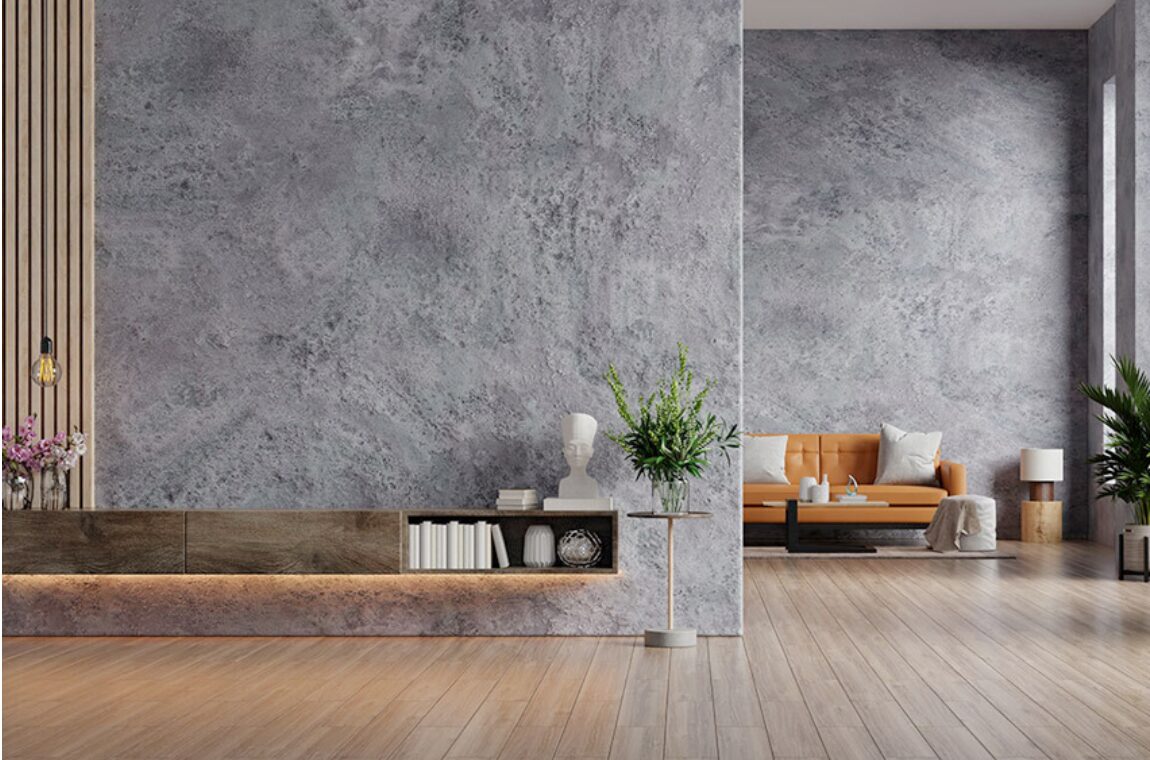When it comes to breathing new life into a room, paint is often the first option that comes to mind. But if you’re looking for something beyond flat colors and plain finishes, wall texture paint offers a creative and modern way to add depth, style, and personality to your living space.
Whether you’re redesigning your home or giving your office a facelift, wall texture paint can elevate the feel of any room. In this guide, we’ll explore what textured paint is, the different types available, where and how to use it, and why it’s becoming a go-to choice for many homeowners and interior designers alike.
Wall texture paint is a specialized kind of paint designed to add a raised or patterned surface to a wall. Unlike standard paints that provide only color, textured paints contribute both visual interest and tactile appeal. These paints can hide surface imperfections and create a dramatic or subtle finish, depending on your preference.
From rustic to refined, there’s a wide range of textures to choose from—each bringing a unique character to your walls.
1. Hides Imperfections:
One of the main benefits of textured paint is its ability to conceal wall flaws like cracks, dents, or uneven patches. Rather than spending time on wall repairs, texture can act as a clever cover-up.
2. Adds Dimension:
Flat walls can feel sterile and uninspired. Texture adds movement and shadow play, creating a sense of dimension that plain paint simply can’t provide.
3. Enhances Aesthetic Value:
Whether you’re aiming for a contemporary industrial look or a warm Mediterranean vibe, texture paints contribute to your home’s aesthetic with very little effort.
4. Durable and Long-Lasting:
Textured finishes tend to be tougher and more wear-resistant than traditional flat paints, making them ideal for high-traffic areas.
1. Sand Texture Paint:
Blended with fine sand particles, this type provides a slightly gritty finish. It’s subtle but effective in covering imperfections while adding a matte, grainy touch to your walls.
2. Knockdown Texture:
This method creates a stucco-like finish. It’s applied using a spray or trowel and then flattened slightly, giving the wall a rustic, mottled effect.
3. Popcorn Texture:
Mostly used for ceilings in the past, this bumpy finish can also be applied to walls for dramatic texture. However, it’s more suitable for large, open spaces.
4. Orange Peel Texture:
Just like the skin of an orange, this type offers a lightly dimpled surface. It’s subtle enough for modern interiors and commonly used in both residential and commercial spaces.
5. Venetian Plaster:
This luxury option mimics the look of polished marble. Applied with multiple layers and finished with a topcoat, it offers a glossy, sophisticated appearance that elevates any room.
While wall texture paint can be applied just about anywhere, it works particularly well in the following areas:
- Accent Walls: Highlight a single wall in the bedroom, living room, or hallway for a bold effect.
- Dining Areas: Add elegance and interest to formal or casual dining spaces.
- Entryways and Hallways: Make first impressions count by using texture in narrow or transitional spaces.
- Bathrooms and Kitchens: Some moisture-resistant texture paints can bring a unique touch to these functional rooms.
Remember to consider lighting—natural and artificial light both play a big role in how the texture appears throughout the day.
1. Prepare the Wall:
Clean the surface thoroughly and repair major dents or holes. Though textured paint hides minor flaws, a clean base ensures better adhesion.
2. Prime the Surface:
Using a good-quality primer helps the texture paint adhere better and gives a more uniform appearance.
3. Choose the Right Tools:
Rollers, brushes, trowels, and spray guns all serve different texture styles. Your chosen texture type will dictate which tools you need.
4. Work in Sections:
Because textured paint dries faster than regular paint, work in small sections to avoid inconsistencies.
5. Test First:
Always apply a sample patch. This allows you to experiment with pressure, tool use, and finish before committing to a full wall.
While textured walls are beautiful, they can attract dust more easily than flat ones. Regular maintenance will keep them looking their best:
- Use a soft brush attachment on a vacuum for dry dusting.
- Wipe gently with a damp cloth; avoid abrasive cleaners.
- For deeper stains, use a sponge with mild soap, but always test on a hidden area first.
Texturing a wall isn’t as simple as rolling on a coat of paint. If you’re handy and enjoy a challenge, DIY kits are available. However, for complex textures like Venetian plaster or large wall surfaces, it may be wise to hire a professional painter or interior specialist. A poorly executed texture job can look sloppy and may cost more to fix in the long run.
Wall texture paint is more than a design trend—it’s a versatile and practical solution that adds character, depth, and sophistication to your interiors. Whether you’re going for a bold statement or subtle elegance, there’s a texture and style to fit every vision.
If you’re looking to move beyond plain, lifeless walls and embrace creativity in your space, wall texture paint could be the transformative touch your home has been waiting for. For homeowners or interior designers searching for inspiration, exploring modern wall texture paint options can open up a world of design possibilities that go far beyond color alone.
